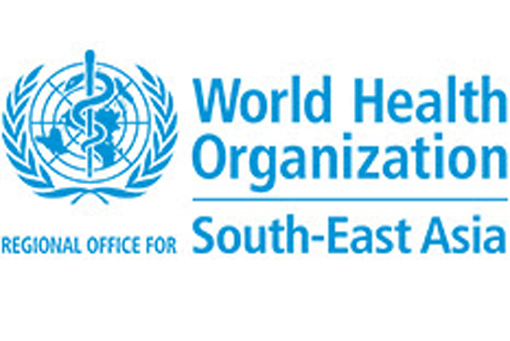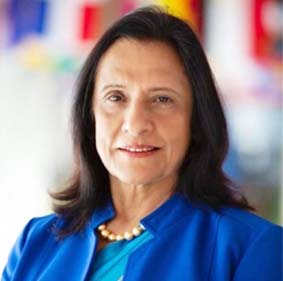- मणिपाल हॉस्पिटल्स ने पूर्वी भारत का पहला एआई-संचालित इंजेक्टेबल वायरलेस पेसमेकर सफलतापूर्वक स्थापित किया
- Manipal Hospitals successfully performs Eastern India’s first AI-powered injectable wireless pacemaker insertion
- Woxsen University Becomes India’s First Institution to Achieve FIFA Quality Pro Certification for RACE Football Field
- यूनियन बैंक ऑफ इंडिया ने यू – जीनियस राष्ट्रीय प्रश्नोत्तरी फिनाले में प्रतिभाशाली युवाओं का किया सम्मान
- Union Bank of India Celebrates Bright Young Minds at U-Genius National Quiz Finale
End violence against women: WHO

By Dr Poonam Khetrapal Singh, WHO Regional Director for South-East Asia

One in three experience physical and/or sexual violence in her lifetime, shows WHO’s new estimates, launched in March 2021. Most of this occurs as intimate partner violence. Estimates suggest the South-East Asia Region ranks second highest, at around 33%. Such violence has serious health impacts, both immediate and long term, including injuries, sexually transmitted infections, HIV and unplanned pregnancies as well as mental health problems. These place violence against women among today’s priority public health issues.
The WHO South-East Asia Region joins activists and partners around the world in marking the 16 Days of Activism against Gender-Based Violence. The annual campaign aims to strengthen awareness and action to end violence against women. On its 30th anniversary of this annual campaign, we join the call: “Orange the World: END VIOLENCE AGAINST WOMEN NOW!”
Such violence only tends to increase during emergencies and epidemics, resulting in higher risks to the health and safety of women and girls. Evidence suggests that violence against women has increased during the ongoing COVID-19 pandemic. The exacerbation of violence against women can be regarded as “the invisible pandemic” accompanying the COVID-19 pandemic. This is so for many reasons—limitations on movement keep women isolated from support and in close proximity with their perpetrators, often alongside increased economic and psychological stress. Women have been disproportionately affected by loss of livelihoods, increasing their economic vulnerability and dependence, and by school closures. Their unpaid work burdens have increased dramatically. This increased vulnerability comes at a time when the pandemic has disrupted social protection services, such as hotlines, shelters and legal aid—and disrupted vital sexual and reproductive health services, often the first point of contact for survivors of violence.
The health sector is a critical part of a multisectoral strategy to prevent and respond to violence against women.
First, health policymakers and managers must strengthen the capacity of the health system and providers and ensure continuity, adequate resourcing and appropriately adapted delivery of services for survivors as part of essential health services. Health facilities should identify information about locally available services for survivors (e.g., hotlines, shelters, rape crisis centers, counselling), including opening hours, contact details and whether these can be offered remotely, and establish referral links. Health providers, once aware of the issue and its implications, should offer medical treatment as well as first line support, such as empathetic listening, asking about needs, and connecting survivors to support.
Second, the health sector has a role to play, with other sectors and stakeholders, in preventing violence against women and girls. Prevention is a continuum. Most primary prevention strategies can be implemented outside the health sector – in communities, in schools, through mass media. But secondary and tertiary prevention take place after women have experienced or are experiencing violence. Such women may seek health care, even if they do not disclose the violence. Here is where health care providers have a key role to play. If health-care providers are alert to identifying such women early – in early stages of the violence or before it becomes very severe – and offer appropriate care and responses, then they could prevent or reduce recurrence of such violence. Health care providers can also incorporate messages about prevention in health promotion activities.
Third, the health sector has a role to play in advocating for, developing and implementing evidence-informed policies and strategies for gender-based violence prevention and response. More and better data are needed, and these must be collected in ethical and safe ways and consistent with survivor-centred principles.
Community members can also help increase awareness, stay in touch with survivors in safe ways, and discreetly offer information and support.
WHO plays a key role in bringing attention to violence against women and girls as a public health and gender equality issue, including in humanitarian settings, by: building the evidence; developing guidelines; encouraging political will and accountability and strengthening country capacity of health systems and providers. WHO has resources for women survivors of violence, people who are concerned that someone they know is experiencing violence, and for those working across the healthcare system and in humanitarian settings.
This year, WHO again joins its partners to build gender-responsive health and social protective systems and for the elimination of violence against women. During the 16 Days, WHO and UNFPA’s regional office for Asia and the Pacific are training health facility managers and policy-makers in three countries, namely, Bhutan, the Maldives and Sri Lanka, in strengthening health sector capacity to respond to VAW, through a series of 6 online workshops. On 30 November, WHO, along with UN Women’s and UNFPA’s Regional Offices for Asia and the Pacific, will host an online event to disseminate the updated prevalence estimates on intimate partner violence and sexual violence in the Region. The event will also discuss how better data could be used to strengthen policies and actions to eliminate all forms of violence against women and girls.
The 16 Days campaign, which ends on Human Rights Day (10 December), reminds us that women’s rights are human rights and we should do all we can to respect, protect and fulfil these rights. Let’s resolve to redouble our efforts to prevent and respond to the pandemic of violence against women—and keep women and girls everywhere safe.


